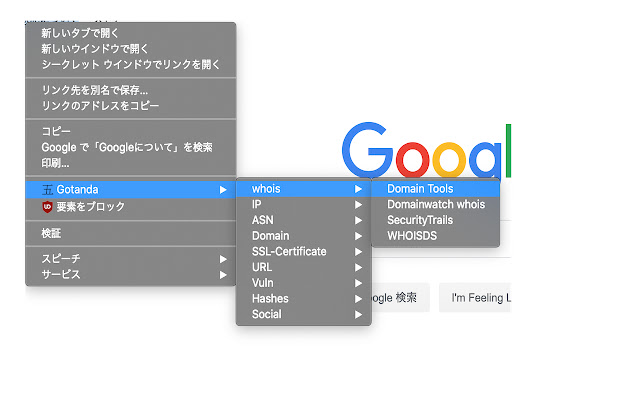The topic of DEATH is not one that most people care to talk about, but the truth is that we are all going to die at some point and everything that we did online is going to end up in limbo if we don't make sure that someone we trust is going to be able to gain access to this information. This is going to be extremely important in order to close it down, or have your loved one do whatever you want them to do with your information. There are many things to take into consideration for this kind of situation. If you are like the average modern person, you probably have at least one email account, a couple of social media accounts in places like Facebook and Twitter. Perhaps you also have a website that you run or a blog. These are all very common things that people will usually do at some point and if you have anything that you consider valuable, you should have a way to leave it in the hands of someone you trust when you pass away.

Related word
Pass Accounts and Passwords After Death
Maybe you have an online platform that has a lot of content that you find useful and important. Perhaps you have even been able to turn some of that content into monetizable material and you don't want this to end when you pass away. This is more than enough of a reason to make sure that your information can be given to someone when you are no longer around.
There have been many cases when all the information has ended up being impossible to recover when a person has died, at least not without the need for the family members to do all kinds of things in order to prove a person is deceased. So here are some ways, you can passyour online accounts/data after death:
1) Making a Safe 'WILL' (or Locker) containing master password.
- Make an inventory of all your online accounts and list them on a piece of paper one by one and give it to your loved one. For eg:– Your primary email address
– Your Facebook ID/email
– The Bank account or Internet banking ID
– etc. To clarify, it will be only a list of the accounts you want your loved one to be able to access after you're dead. Just the list of accounts, nothing else (no passwords). - Set up a brand new e-mail address (Possibly Gmail account). Lets say youraccountsinfo@gmail.com
- Now from your usual email account, Send an e-mail to youraccountsinfo@gmail.com, with the following content:– dd349r4yt9dfj
– sd456pu3t9p4
– s2398sds4938523540
– djfsf4p These are, of course, the passwords and account numbers that you want your loved one to have once you're dead. - Tell your loved one that you did these things, and while you're at it, send him/her an e-mail from youraccountsinfo@gmail.com, so he/she will have the address handy in some special folder in his/her inbox.
- Put the password for youraccountsinfo@gmail.com in your will or write it down on paper and keep it safe in your bank locker. Don't include the e-mail address as well, just put something like "The password is: loveyourhoney432d".
And its done! Your loved one will only have the password once you're dead, and the info is also secure, since it's split in two places that cannot be easily connected, so if the e-mail address happens to be hacked, the perpetrator won't be able to use it to steal anything that you're going to leave for your loved one.
2) Preparing a Future email (SWITCH) containing login information
This method is very similar to the first one except in this case we will not be using a WILL or Locker. Instead we will be using a Service called "Dead Mans Switch" that creates a switch (Future email) and sends it to your recipients after a particular time interval. Here is how it works.
- Create a list of accounts as discussed in the first method and give it to your loved one.
- Register on "Dead mans switch" and create a switch containing all the corresponding passwords and enter the recipients email (Your loved one).
- Your switch will email you every so often, asking you to show that you are fine by clicking a link. If something happens to you, your switch would then send the email you wrote to the recipient you specified. Sort of an "electronic will", one could say.
3) Using password managers that have emergency access feature
Password managers like LastPass and Dashlane have a feature called as "emergency access". It functions as a dead man's switch. You just have to add your loved one to your password manager, with emergency access rights. he/She does not see any of your information, nor can he/she log into your accounts normally.
But if the worst happens, your loved one can invoke the emergency access option. Next your password manager sends an email to you and starts a timer. If, after a certain amount of time interval, you have not refused the request, then your loved one gets full access to your password manager.
You can always decide what they can potentially gain access to, and you set the time delay.
Why should i bother about passing my digital legacy?
Of all the major online platforms, only Google and Facebook have provisions for Inactiveaccounts (in case of death). Google lets you plan for the inevitable ahead of time. Using the "Inactive Account Manager", you can designate a beneficiary who will inherit access to any or all of your Google accounts after a specified period of inactivity (the default is 3 months).
Facebook on the other hand will either delete your inactive account or turn it into a memorial page when their family can provide any proof of their death, but there is also a large number of platforms that don't have any specific way for people to be able to verify the death of a loved one in order to gain access to the accounts. In either case, you wouldn't want your family to have to suffer through any hassles and complications after you have passed away.
You should also consider the importance of being able to allow your loved ones to collect all the data you left behind. This means photos and experiences that can be used to show other generations the way that you lived and the kind of things you enjoyed doing.
Those memories are now easier to keep and the best photos can be downloaded for the purpose of printing them for photo albums or frames. Allowing them to have the chance to do this in a practical way is going to be a great gesture and securing any profitable information is going to be essential if you want a business or idea to keep moving forward with the help of those you trust.
This is the reason why you need to be able to pass your online account information after death, but no one wants to give access to this kind of information to their loved ones because it's of a private nature and we would feel uneasy knowing that others can access our private conversations or message.
- Pentest Tools Website
- Hacker Tools Apk
- Hack Tools 2019
- Hacking Tools
- Pentest Tools Windows
- Hack Tools Online
- Hacking Tools Hardware
- Hacking Tools Pc
- Nsa Hacker Tools
- Hack And Tools
- Pentest Tools Download
- Hak5 Tools
- Hacking Tools Online
- Hacks And Tools
- Pentest Tools
- Pentest Tools Bluekeep
- Pentest Tools Kali Linux
- Pentest Tools
- Pentest Tools Github
- Pentest Tools List
- Hacking Tools And Software
- Hacker Tools List
- Pentest Tools Nmap
- Hack Rom Tools
- Hack Tools For Pc
- Hack Tools Pc
- Pentest Tools For Windows
- Pentest Tools Linux
- Black Hat Hacker Tools
- Hacker Tools 2020
- Hacking Tools For Beginners
- Kik Hack Tools
- Pentest Tools Download
- Pentest Tools Tcp Port Scanner
- Pentest Tools Alternative
- New Hack Tools
- Computer Hacker
- Hack App
- Nsa Hacker Tools
- Install Pentest Tools Ubuntu
- Pentest Tools Online
- Nsa Hack Tools Download
- Top Pentest Tools
- Hacking Tools For Beginners
- Hacking Tools For Windows
- Hacking Tools Kit
- Bluetooth Hacking Tools Kali
- What Are Hacking Tools
- Hack Tools For Ubuntu
- Hacker Tools 2020
- Beginner Hacker Tools
- Hacker Tools Online
- Hacking Tools Mac
- Tools For Hacker
- Hacking Tools 2020
- Usb Pentest Tools
- Hack Tools For Games
- Pentest Box Tools Download
- Hacking Tools Online
- Hacker Tools Mac
- Pentest Tools For Ubuntu
- Hacking Tools Github
- Hacker Tools 2020
- Pentest Tools
- Hack Tools 2019
- Growth Hacker Tools
- Hack Tools Pc
- Hack Tools Github
- Pentest Tools Subdomain
- Github Hacking Tools
- Pentest Tools Download
- Pentest Tools For Mac
- Hacker Tools Mac
- Pentest Tools Windows
- Nsa Hack Tools Download
- Blackhat Hacker Tools
- Best Hacking Tools 2019
- Bluetooth Hacking Tools Kali
- Hacker Tools Free Download
- Hacking Tools Pc
- Best Hacking Tools 2019
- Hacking Tools For Beginners
- Hack Tools For Windows
- Growth Hacker Tools


